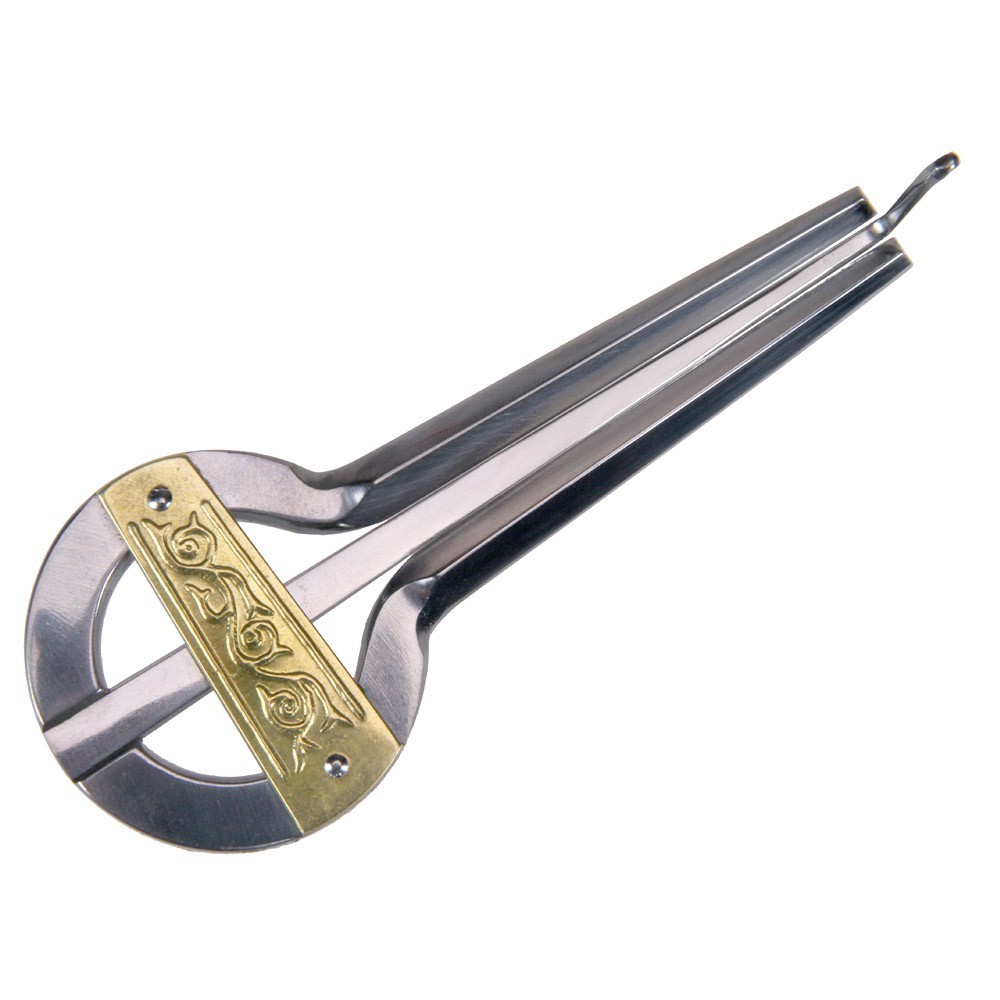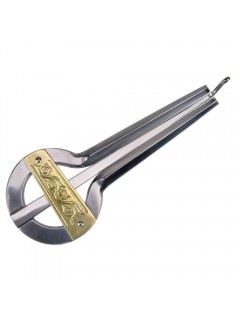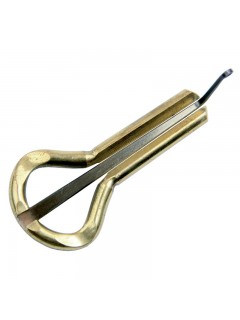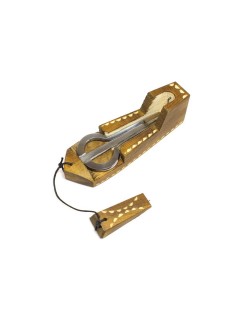Jew's harp history.
Jew’s harp is one of the most ancient musical instruments, it can be found in many ancient cultures around the world in different modifications, and is known by many different names (khomus, vargan. dan moi, jaw harp, jew's harp, mouth harp, etc). Jew’s harp have not changed its appearance as it passed through the centuries because its form is so simple and yet so perfect. Before metal forging was invented, jew’s harps were made out of bone and wood but they were rather fragile. Although nowadays most jew’s harps are made of steel, wooden harps can be still met in many eastern cultures such as Japanese, Vietnamese and Oceania. First mention of jew’s harp was found on the ancient Roman fresco – the image of an orchestra clearly includes a man playing a jew’s harp. In Russia jew’s harp are most popular in Yakutia, Tuva, and Altai. Vibrations made when playing a jew’s harp can cause a state of light controllable trance, which is why jew’s harps are widely used in shamanic practices.
Bone and wooden jew's harps.


Aside from the jew’s harp itself, the whole human’s body is involved in playing: fingers, lungs, tongue, stomach muscles, throat. Traditionally it is considered that playing a jew’s harp clears mind, strengthens human vitality, harmonizes functions of internals, and this is proven by modern researches. Jew’s harp form is very simple also it’s very simple to begin playing it, you will need less than an hour to get first sounds, but its capabilities are so rich that seem nearly endless, and every player no matter for how long he plays still can find something new on this path.
Rich traditions of jew’s harp playing live in Russian Siberia and Far East. There are 3 most sacred symbols in those Northern cultures: deer, fire (sun), and shaman drum. Jew’s harp is considered as shaman drum analogue and often referred to as “teeth drum”. Jew’s hap participates in most shamanic rituals on par with a shaman drum often even replacing it. It is said that shaman drum opens the doors to the other dimensions and jew’s harp protects the shaman summoning ally spirits and helps communicating with them (by the way, jew’s harp was actively used for transmission of encoded information by the Sicilian Mafia).
Yakutia is one of the main world centers of jew’s harp forging and express, it is called “khomus” there and is considered as an instrument which can express all human feelings, music is based on expressing emotions, playing certain moods, imitating nature sounds, sometimes it even turns into lyrical narrative when words are spoken through the jew’s harp.
Classical Yakut forged khomus by master Maltzev

Jew’s harp in today’s world.
Advances in communication technology and sound engineering in 1990s provided a great opportunity for people in love with ethnic music to exchange information with others all around the world. In addition, jew’s harp music got into very productive with modern electronic music. Modern players tend not only to play virtuoso improvisations - many are engaged in interesting experiments, associated with the avant-garde and overtone music. Some musicians prefer harmony of ensemble playing, while others - "electronic" sound of the jew's harp, however, whatever is played there is always something common: fascinating jew's harp sounds create an extraordinary atmosphere where the past meets the future.
Here is an exmple of using jew's harp in modern music.
Related Products
Maltcev khomus
Melodious khomus by Mihail Maltcev is considered one of the highest quality. Mihail Maltcev inheri..
265.00€ Ex Tax: 265.00€
Altai jaw harp by Pavel Potkin
Altai khomus by Pavel Potkin - bright, simple, loud enough, reliable and versatile.If you want to ..
15.00€ Ex Tax: 15.00€
Mikhailov khomus
Forged steel Yakut khomus by Mikhailov Pavel is rich in timbre, has magnificent balanced sound, rich..
175.00€ Ex Tax: 175.00€
"Compass" jaw harp by Dmitry Glazyrin
"Compass" jew's harp by Glazyrin is a good one for beginers, it is small and easy to handle but ha..
48.00€ Ex Tax: 48.00€




